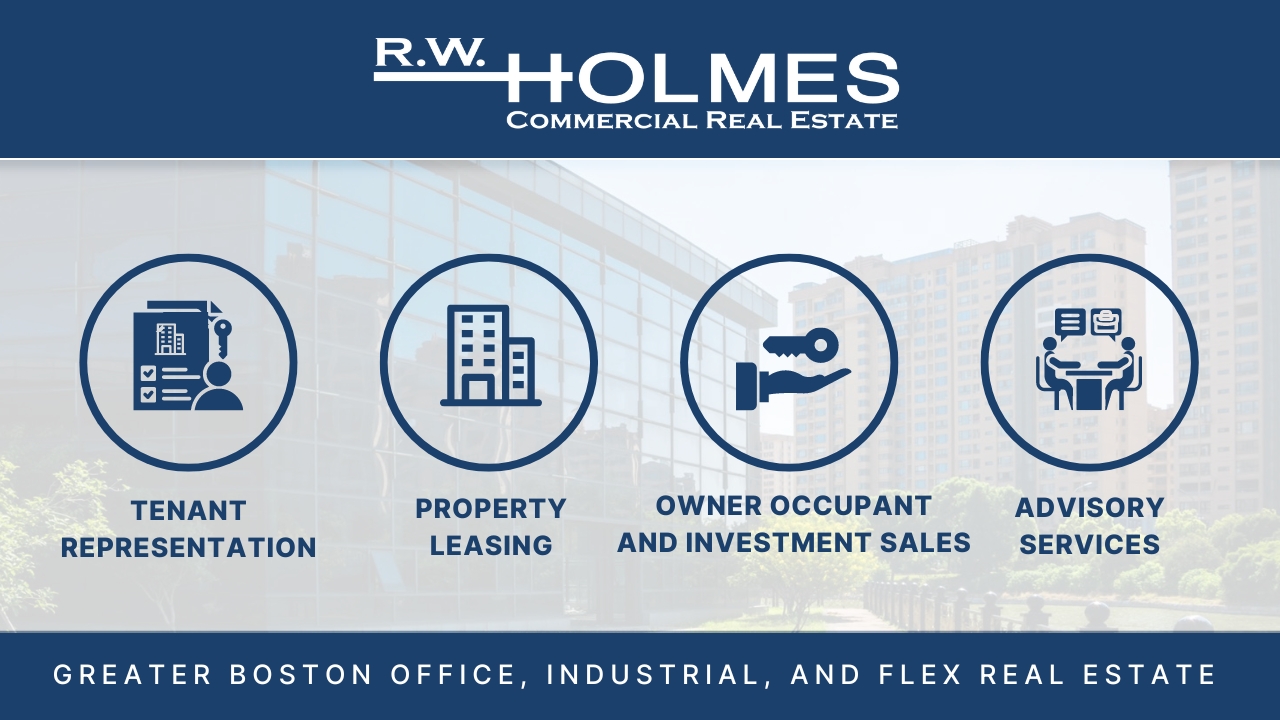WAYLAND, MA— R.W. Holmes, one of the largest commercial brokerage firms serving tenants and landlords in Massachusetts for more than 45 years, recently released its third quarter market report, saying the industrial market remains very tight with a continued low vacancy rate of about five percent and average suburban asking rents averaging nearly $17 PSF NNN.
R.W. Holmes Managing Director Dean Blackey said that the Greater Boston industrial market during most of the 2000s hardly saw any rental rate growth, except inflation-adjusted rental rates.
“Our report continues to validate that the industrial market is not showing any signs of slowing down any time soon. From the early 2000s to 2018, the vast majority of the industrial complexes we handled changed very little with respect to rent fluctuation,” said Mr. Blackey. “Apart from nominal rent appreciation to keep pace with inflation, there was never really any seismic change in one way or another. Even during the recession from 2008-2012, rents for industrial product in Greater Boston never ventured too far off their historical mean. That all changed six years ago.”
Here are some other highlights from the R. W Holmes third quarter report:
- Despite a challenging market for industrial tenants due to low vacancy (+/- 5%) and rents continuing to climb (averaging +/- $17.50/NNN), leasing activity continues to be strong across 128 North/Rt. 3 North market.
- While there is still demand, industrial sales are getting harder to come by for investors. The pricing expectation for the market that was set over a year ago has made it very difficult to transact in the current debt environment.
- Construction of approximately 5,100,000 square feet of industrial space in the 128 North/Rt 3 North submarket is presently underway. About 366,000 square feet were delivered in Q3 2023, and about another 400,000 square feet are set to be delivered in Q4. Construction starts (new projects, permitted and ground broken) are slowing down.
- The industrial sector in 128 South, 495 North/West Rt. 2, and other submarkets also remain strong. A rising number of tenants who signed leases 5+ years ago are on the move after their building was sold during the term, or many are holding over on their rent and opting for month-to-month leases as it is cheaper than a new lease.
- When it comes to the Greater Boston office market, it is a totally different story. In the Central 128 market, for example, the office vacancy rate is hovering over 14 percent, and average gross asking rents are at approximately $40 PSF. However, owners are transacting at lower than asking rates if a tenant can move in with little work or longer term leases.
- Sublease activity has increased again in Central 128. The third quarter alone saw over 600,000 square feet of sublease space come onto this submarket market., The rise i
- sublease spaces has led to Sublandlords providing their spaces at significant discounts., For example, subleases at Winter Street in Waltham, such as Fresenius’ space, are offering subleases at $18 per square foot, while typical rents in that area are more than double.

“While asking rents have shifted minimally, we see owners get much more aggressive once a tenant has toured and ownership can understand their buildout needs. The incentive varies depending on tenant needs and ownership’s financial situation, but this has ranged from $5+ per square foot discounts, increased TIA packages, termination options, or large free rent offerings,” said R.W. Holmes Director of Corporate Services Elizabeth Holmes. “As more companies look to downsize, we see some owners successfully charging slightly higher rents in exchange for smaller footprints for existing tenants. This may be an opportunity for landlords to at least keep face rents up despite shrinking tenant spaces and gain some additional capital to use towards the cost to demise larger suites.”



















